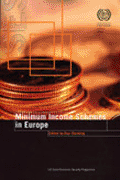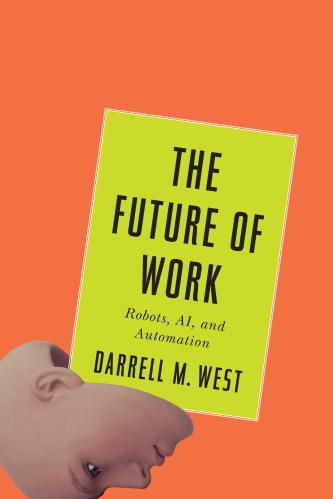Studies in this week’s Hutchins Roundup find that the richest American work, robots will change the labor market, and more.
Want to receive the Hutchins Roundup as an email? Sign up here to get it in your inbox every Thursday.
The top 1 percent of Americans are working rich, not idle rich
Using tax data linking firms to their owners between 2001 and 2014, Matthew Smith of the Treasury Department and academic coauthors find that the richest Americans are entrepreneurs who actively manage their firms rather than relying solely on their capital investments. Although most of the income of top earners—people in the top 1 percent of the income distribution—is classified as non-wage income, it largely reflects business profits received by working-age owners. The authors argue that most of this profit should be considered as labor income because it represents a return to owner’s human capital in the form of labor, networks, reputation, and other soft skills. They show, for example, that private business profit falls by three-quarters after an owner retires or dies prematurely. Reclassifying 75 percent of private business profit as labor income, the authors calculate that 70 percent or more of all million-dollar earners are working rich—that is, they derive most of their income from human capital, not physical or financial capital.
Robotic automation will change the US labor market
Angst that automation and immigration are hurting U.S. workers is widespread. Combining data on the number of industrial robots shipped to each U.S. industry with the American Community Survey from 2004 to 2016, George Borjas and Richard Freeman of Harvard University estimate that an additional robot can displace up to four workers. The negative effect of automation is strongest for less educated workers, female workers, and workers in occupations that are easily automated such as travel agents and farm workers. They also find that automation decreases the hourly wage of workers without a college degree by approximately 2 percent; in contrast, automation complements highly educated workers, increasing their hourly wage by 1 percent. These effects far exceed the estimated effects of an additional immigrant on employment and wages. While the growth of robots during 1996 to 2016 was too modest to affect employment and wages, the authors caution that continued exponential growth in the use of robots could disrupt the job market in the foreseeable future.
Minimum wages have little effect on employment
Doruk Cengiz of the University of Massachusetts, Amherst and coauthors find that after an increase in the minimum wage, the number of minimum wage jobs remains unchanged, but the distribution of jobs shifts. Using 138 state-level minimum wage increases between 1979 and 2016, the authors find that a minimum wage hike increases the number of jobs paying at or just above the new minimum wage, and that this increase mirrors the number of jobs that used to pay below the new minimum wage. The net effect on employment is close to zero. The authors also show that an increase in the minimum wage has spillover effects; it raises the wages of those earning up to $3 more than the minimum wage. Such spillovers represent around 40 percent of the overall wage increase from a minimum wage hike.
Chart of the week: Rapid rise in Japanese labor force participation fueled by increased employment of elderly, women, and foreigners

Quote of the week:
“So what have we learned from [ECB’s 20 years of existence]? The ECB’s monetary framework rests on three elements: … First, we have seen that a well-defined mandate is vital for our credibility with the public, because it guarantees that the ECB will always act in the interest of the whole euro area, and will not be swayed by interest groups. Second, we have seen that instrument independence is key to an effective monetary policy, since it allows the central bank to act quickly and flexibly to shocks, especially in exceptional times. Indeed, a well-equipped toolbox, comprising both standard and non-standard instruments, has proven indispensable in conditions where monetary policy transmission is impaired or where space for interest rate cuts is limited,” says Mario Draghi, president of the European Central Bank.
“Third, we have seen the importance of a strong accountability framework, particularly when central banks have to use new tools that are not well-understood by the public. Central banks are powerful and independent, but they are unelected. This combination can only be squared if they are held accountable by elected authorities. In light of this, we have stepped up our efforts to improve our communication and strengthen our accountability in recent years. The Governing Council has started to publish the accounts of its monetary policy meetings.”
Ever wondered if you could do a better job managing the federal budget than our elected representatives? Play The Fiscal Ship and find out!










Commentary
Hutchins Roundup: Working rich, robotic automation, and more
January 17, 2019
Studies in this week’s Hutchins Roundup find that the richest American work, robots will change the labor market, and more.